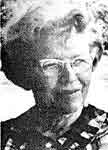

A man whose narratives could be credited as mirrors of reality was a modesty man: his reports ought to make that modest visible.
Steven Shapin and Simon Schaffer, Leviathan and the Air-Pump
The modest witness is the sender and receiver of messages in my e-mail address. So let us investigate how this subject position is woven into the nets traced here. The modest witness is a figure in the narrative net of this book, which works to refigure the subjects, objects, and communicative commerce of techno-science into different kinds of knots. I am consumed by the project of materialized refiguration; I think that is whats happening in the worldly projects of technoscience and feminism. A figure collects up the people; a figure embodies shared meanings in stories that inhabit their audiences. I take the term modest witness from the important book by Steven Shapin and Simon Schaffer (1985), Leviathan and the Air-Pump: Hobbes, Boyle, and the Experimental Life. In order for the modesty, referred to in the epigraph above to be visible, the manthe witness whose accounts mirror realitymust be invisible, that is, the inhabitant of the potent "unmarked category," which is constructed by the extraordinary conventions of self-invisibility. In Sharon Traweeks wonderfully suggestive terms, such a man must inhabit the space perceived by its inhabitants to be the "culture of no culture" (1988).
Donna J. Haraway
from Modest_Witness@Second_Millennium.Female
Man©_Meets_OncoMouse™: Feminism and
Technoscience, Routledge, 1997.
Thats the Museum of Modern Art for you! But to return to the dogmatism of Breton and othersit was he who named it Déjeuner en fourrure, playing on the association with queer sexuality in Manets Déjeuner sur lherbe and Sacher-Masochs Vénus en fourrures. The word-games of critics, the power struggles of men! So part of its scandalous appeal was not invented by me. It was a fluke. I had been making bits of fur-covered jewelry to make a little money in 1936. I showed a piece to Picasso and Dora Maar and they joked that anything could be covered with furthe chairs, the door. I added the cups and the saucers on the table. I was thinking only of the contrast of material textures. Later, Breton asked me to participate in the Ratton show. I simply made up the object according to the idea. I didnt care about any title at all. I dont really care that it is now known by Bretons title.
Meret Oppenheim
Robert J. Belton, "Androgyny: Interview with Meret Oppenheim" from Surrealism and Women, MIT Press, 1991.
NOTE:
Meret Oppenheims Déjeuner en fourrure is part of the current
Museum of Modern Art exhibit, "Modern Starts: People, Places and Things."
go to this issue's table of contents